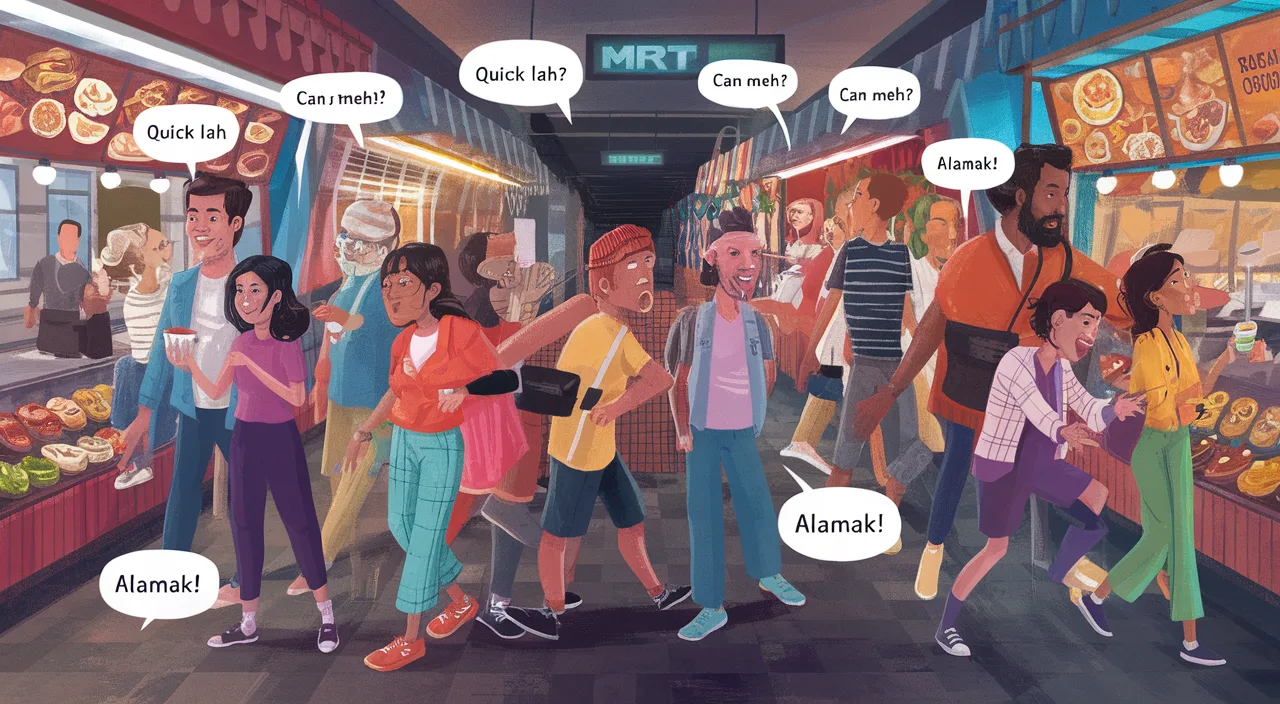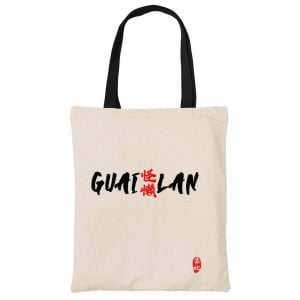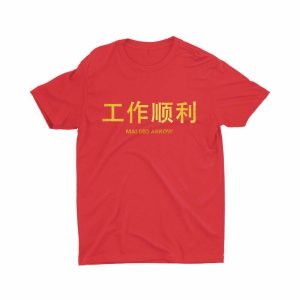Why Do Singaporeans Always Say ‘Quick lah’?
Because sometimes, just saying “hurry” isn’t urgent enough. Quick lah amplifies the message, adds flavor, and ensures everyone knows it’s time to move. Whether you’re rushing friends to leave the house or telling colleagues to finish lunch quickly so you can return to the office, adding that distinctive lah delivers the right amount of urgency with warmth and solidarity.
-
Children, Chinese, Chinese New Year, KaoBeiKing, Quote, Singlish/Hokkien, Typography
$30.00 Select options This product has multiple variants. The options may be chosen on the product page
TL;DR Summary
- Quick lah represents more than a Singlish phrase – it’s an emotional expression of Singaporean culture.
- This phrase combines urgency with friendship, like someone encouraging you to run faster while staying by your side.
- Adding lah can soften or intensify the tone, depending on context and delivery. Never underestimate the power of this single syllable.
- You’ll find Quick lah regularly featured in films, TV shows, and advertisements, highlighting its deep connection to Singaporean culture.
- This goes beyond English with an accent – it’s cultural shorthand for shared experiences.
- Want to sound authentically local? Master when and how to use Quick lah properly. Yes, there’s definitely an art to it.
The Cultural Significance of ‘Quick lah’ in Daily Singaporean Life
Singaporeans say Quick lah in virtually any situation requiring speed, efficiency, or honestly – affectionate impatience. This two-word expression forms part of our verbal DNA in everyday interactions, from MRT announcements to coffee shop queues. The beautiful part? It’s spoken with love, urgency, perhaps slight exasperation, but always with mutual understanding.
Understanding the Singlish Culture
Origins of Singlish
Singlish isn’t broken English – it’s Singapore’s brilliant linguistic fusion of English, Malay, Tamil, Hokkien, Cantonese, and other dialects, thoughtfully combined through necessity and refined over generations. Born from Singapore’s multicultural energy, Singlish efficiently communicates ideas with added nuance, emotion, and remarkably clear shortcuts.
Significance of ‘lah’ in Singlish
If Singlish had a golden rule, it would be: Never underestimate the sentence-ending particle. And lah reigns supreme among them. Expressing hope, annoyance, validation, attitude, agreement – or everything simultaneously – lah serves as our national linguistic seasoning.
Compare saying “Quick” versus “Quick lah.” Feel the difference? One’s a command. The other’s an urgent suggestion from someone who cares about you but might express frustration if you don’t hurry.
-
Children, Chinese, Chinese New Year, KaoBeiKing, Quote, Singlish/Hokkien, Typography
$30.00 Select options This product has multiple variants. The options may be chosen on the product page
When to Use ‘Quick lah’
Examples of Daily Situations
You know you’re truly Singaporean when you’ve heard or used Quick lah in these scenarios:
- When your Grab driver circles the same area repeatedly: “Uncle, can Quick lah?”
- Your friend scrolls social media while class is starting: “Eh Quick lah, later we get scolded.”
- Grandmother walks slowly at the night market: “Ah Ma, Quick lah! Later all the good food sold out!”
- Long queue at your favorite noodle stall while you’re starving: “Quick lah, can make faster or not?”
Essentially: Quick lah = Hurry up + I care about you + You’re wasting time + I’m not completely angry… yet.
Popular Usage in Movies and TV Shows
Local films like I Not Stupid and Number 1 showcase rapid-fire Singlish conversations where Quick lah naturally appears. It’s the perfect line when characters run late, argue, or try staying ahead of their parents’ expectations. Local YouTube comedy skits also feature these expressions, especially when depicting typical Singaporean daily chaos. A recent viral clip’s trending line: “Eh Quick lah, later Electronic Road Pricing charge!” perfectly captures this cultural moment.
Mastering Your Singaporean Expression
Tips on Incorporating ‘Quick lah’ in Conversations
Want to sound authentically local without overdoing it?
- Watch your tone: Use friendly urgency, not aggressive shouting. Say it meaningfully while maintaining good relationships.
- Use strategically: Overusing Quick lah dilutes its impact. Save it for moments that truly matter – like catching MRT doors before they close.
- Add body language: Combine with appropriate gestures or expressions. Bonus points for pointing at your watch or making urgent hand movements.
Pro Tip: Don’t overthink this. When you’re genuinely in a hurry, you’ll probably say it naturally without realizing. That’s how organic it becomes in Singaporean speech.
How ‘Quick lah’ Connects All Singaporeans
The Community Bond of Using Singlish
Say Quick lah to someone overseas and witness the magic: another Singaporean will immediately turn around like cultural radar. It functions as our identity signal. That phrase triggers recognition: ‘You’re from the same sunny island as me.’
Whether you’re navigating Changi Airport arrivals or rushing to reserve hawker center tables, Quick lah creates instant connection. It acknowledges our shared experiences: limited time, tropical weather, and queues long enough to test patience. But most importantly – it’s filled with heart and understanding.
-
Graphic, Inspixe, Ladies, Mens, Quote, T-shirts, Typography
Price range: $30.00 through $38.00 Select options This product has multiple variants. The options may be chosen on the product page
Why It Creates Cultural Unity
You cannot artificially create expressions like this. Quick lah isn’t found in textbooks. It transfers through generations, absorbed during coffee shop conversations, childhood corrections, and late-night supper rushes. The lah – the essence of it – transcends simple punctuation. It carries emotional purpose, saying “We’re navigating this fast-paced life together.”
Perhaps that’s the most compelling reason to continue saying it. Not merely to rush – but to belong to something uniquely Singaporean.
Cost Guide? No Need. Saying ‘Quick lah’ is Completely Free
Unlike Electronic Road Pricing, using Quick lah costs absolutely nothing. Zero payment, no surge charges, not even GST included. You can repeat it multiple times in conversations (though we don’t recommend overdoing it) and it remains completely free. No cost, maximum flavor and cultural impact.
FAQs About ‘Quick lah’
- Is Quick lah considered rude? — It depends entirely on your tone. Friendly urgency is perfectly acceptable. Aggressive shouting might require toning down.
- Can non-Singaporeans use Quick lah? — Absolutely, but please use respectfully and avoid overusing it until it sounds forced.
- What’s the difference between Quick lah and Faster lah? — Quick lah focuses on starting action. Faster lah emphasizes increasing current speed. Subtle but meaningful distinction.
- Is Quick lah appropriate for formal situations? — This question suggests you haven’t used it before. It’s completely informal but remarkably effective in casual settings.
- Can I use Quick lah in text messages? — Yes, though without hearing your voice tone, it might lose some emotional impact.
Final Thoughts
Quick lah represents more than Singlish – it’s Singapore captured in three syllables. It’s your mother urging you forward, your friend encouraging speed, your spirit requesting momentum. Most importantly, it’s what makes us uniquely Singaporean. So next time someone moves too slowly, you know exactly what to say. Quick lah.







